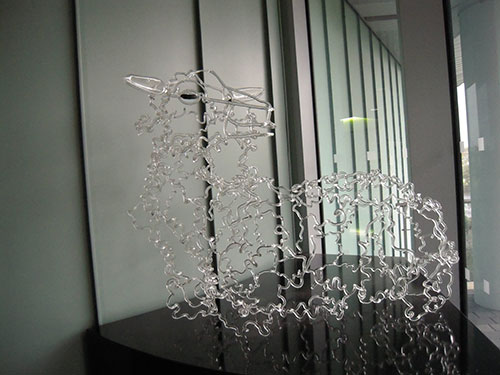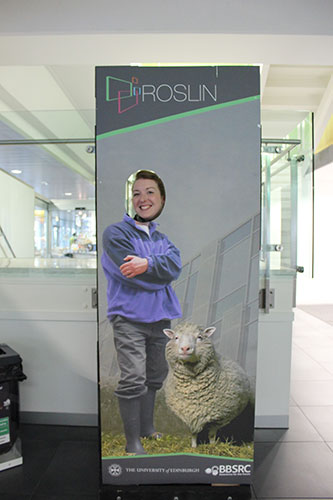On Tuesday 24 September I joined the Scotland Creates Volunteers on a trip to The Roslin Institute (where Dolly the sheep was born!) Having no idea what to expect, the whole trip was enlightening, educational and all round good fun.
The volunteers are part of a project called Scotland Creates: A Sense of Place. They are working to curate an exhibition based on National Museums Scotland’s Science and Technology collections, and have chosen Dolly the sheep as one of their objects to study.

We were greeted by Nicola, The Roslin Institute’s Public Engagement Officer, who gave us a tour of the new and very flash building. We were then taught about the basic science of Dolly and genetic modification. This gave us an insight into the research taking place at Roslin, its importance and how it relates to present day issues.
The afternoon brought us to Dryden Farm. Here we were met by Chris Proudfoot, a research fellow at The Roslin Institute, and John Bracken. John was a key member of the Dolly the sheep team – he was the person who came up with her name! We toured the farm where we were shown genetically modified sheep and pigs.
My initial thoughts on genetically modified animals were unclear, as it’s a subject I knew very little about. Visiting The Roslin Institute taught me that there are very important reasons behind their research, such as tackling diseases. Being able to modify animal’s DNA could massively reduce the chances of major outbreaks of diseases such as Bird Flu.


As a group, we discussed the display of Dolly in the museum. Some of the group found it difficult to grasp the concept of a natural history specimen being located in the Connect gallery, which focuses on science and technology. However, after visiting The Roslin Institute, a number had begun to fully appreciated her scientific significance and found it an appropriate place for her to be on display. The majority of the group liked her interpretation and the ethical questions it raises, along with the choice of touch screen display. The spinning motion of Dolly’s display was hotly debated, with some members finding it expressive of her importance to science while others found it unsettling. Overall, after learning about Dolly’s love of attention and natural curiosity for people, perhaps this is what Dolly would have enjoyed, observing everyone and being put on a pedestal.

Dolly the sheep stars in one of three animated films developed by our Scotland Creates volunteers, which are showing show in our Science and Technology galleries at National Museum of Scotland from November 2013 – January 2014. Find out more at www.nms.ac.uk/scotlandcreates.
